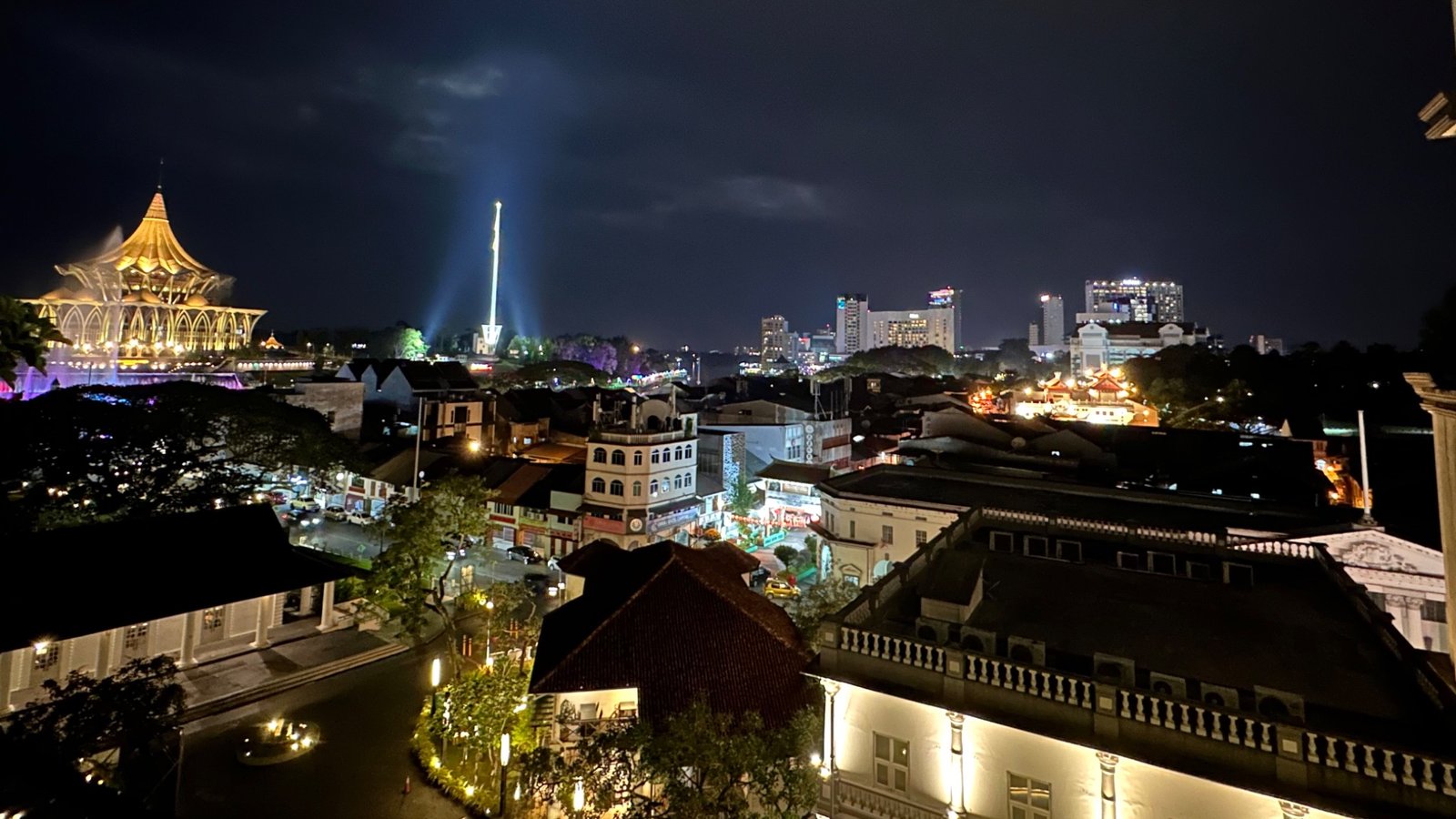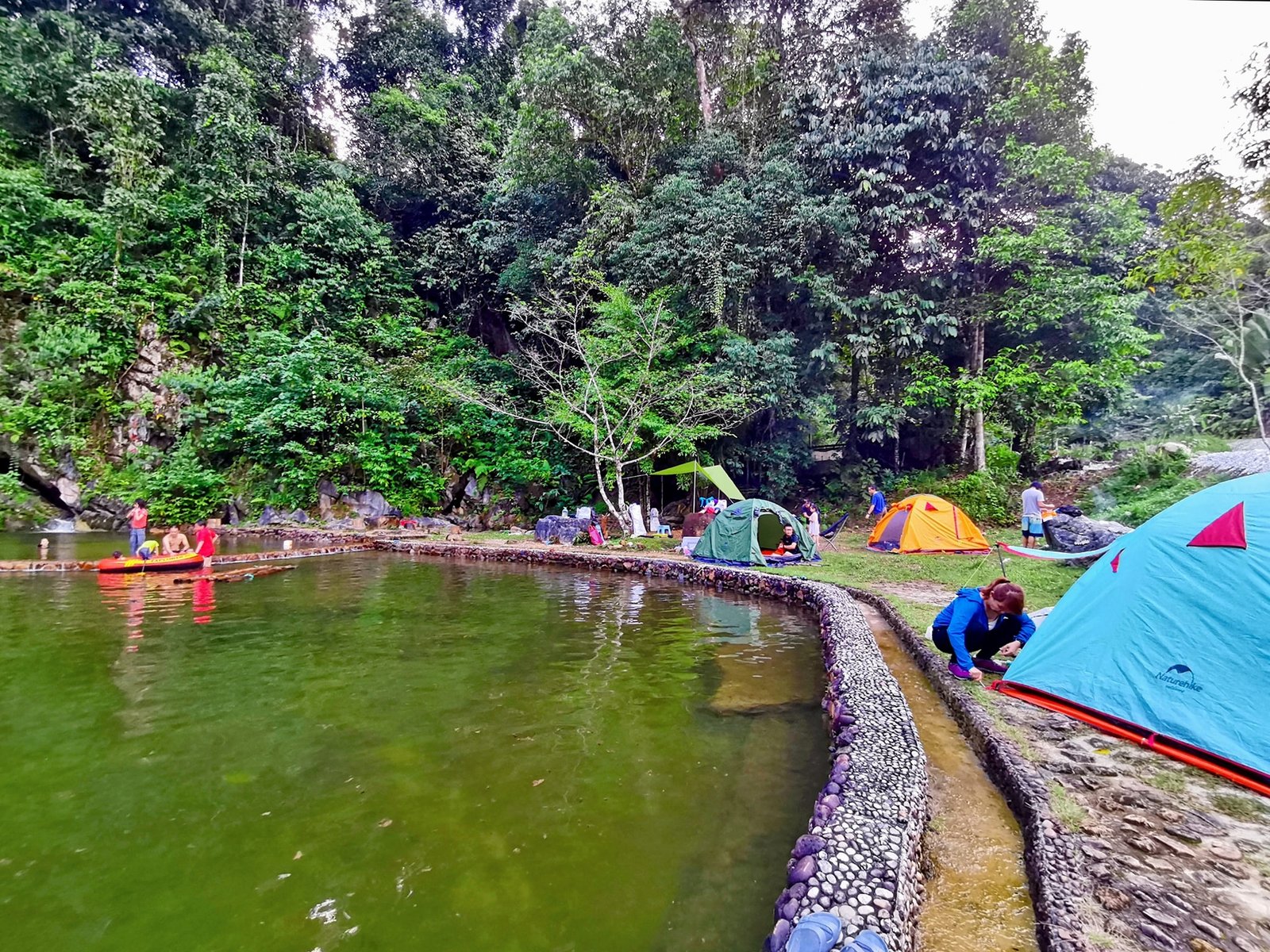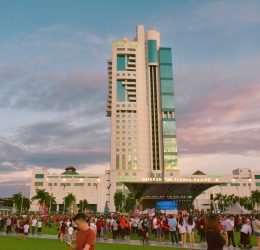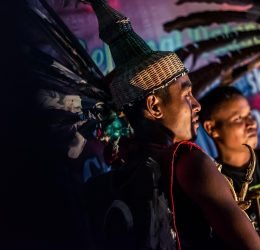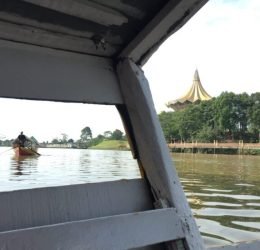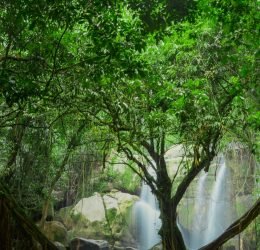Stunning night view of Kuching’s Golden Bridge, DUN building, and Old Bazaar district.
Sometimes, when lessons feel dry or the walls of our house get a bit too familiar, I take a spontaneous route — I become a tourist in my own city. And I bring my little self-learner along for the ride. It’s our version of an adventure day — one where learning happens not in books, but in stories whispered by century-old walls, fading murals, and sizzling hawker stalls. Where else but in the heart of Kuching, around the iconic Merdeka Square — or as many of us still lovingly call it, Padang Central.
This is not just a square. It’s a memory bank of colonial encounters, Sarawak’s evolving identity, and everything in between. It’s where the old Kuching breathes beside the new. And this post is our little walk through time — come along.
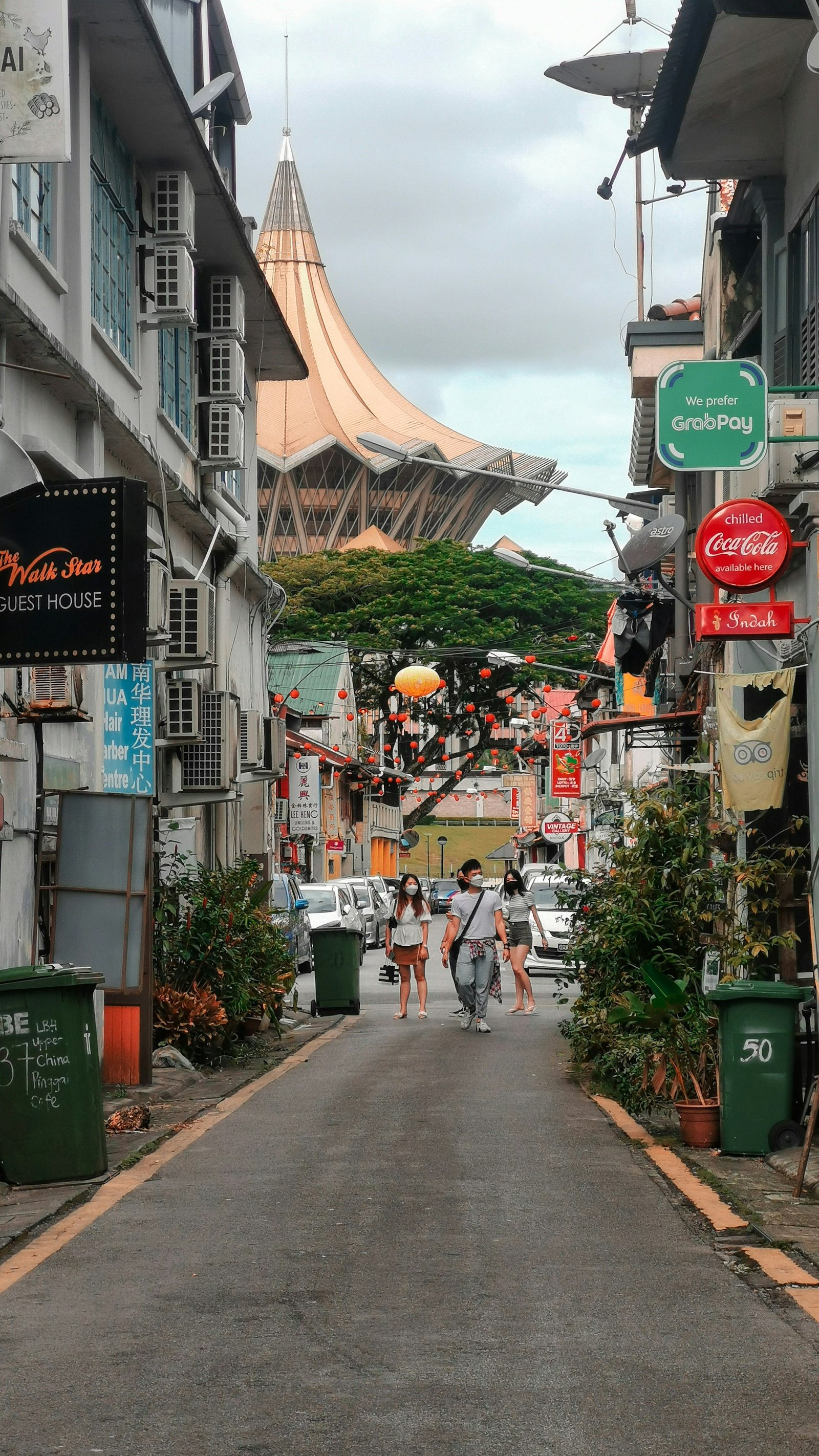
Merdeka Square: From “Central Padang” to Icon of Independence
Right in the middle of Old Kuching sits Merdeka Square, a wide open space framed by colonial charm and everyday life. Long before its current name, this was Padang Central — a field where football matches, parades, and cultural performances marked the rhythm of the town.
To the left stands the Sarawak Museum’s Old Building, an unmistakable white colonial structure from 1891, built under Charles Brooke. Just walking past it with my child, I retold stories of explorers and anthropologists who once passed through these doors. “Imagine how many secrets the Bornean jungle told them,” I’d say, eyes wide — and his were even wider.
The whitewashed buildings around the square, from the grand façade of the Old Courthouse to the charming colonial shoplots, speak of British influence — the neat lines, arched windows, and wooden louvers tell their own story of tropical adaptation and enduring beauty.
The Old Courthouse & Brooke Heritage
A short stroll away lies the Old Courthouse Complex. Restored beautifully, it now houses cafés, boutique shops, and galleries. But step inside and you still feel the gravitas of its past. My child was fascinated by the wooden floorboards and giant ceiling fans, while I imagined the echo of colonial judges, reports of the Rajahs, and trials that shaped Sarawak’s early society.
One can almost hear the steady hum of typewriters and the creak of rattan chairs as British officers documented the state’s affairs. There’s even a small Brooke Gallery nearby, telling the story of the “White Rajahs” — a narrative unique to Sarawak in the whole of Southeast Asia.
Walk Towards the Waterfront: A Time Capsule by the River
From the courthouse, we wandered toward the Kuching Waterfront, another historic spine of the city. The Sarawak River sparkled under the sun (and later, under the city lights in our evening stroll). The State Legislative Assembly building (DUN) glowed gold in the distance, like a modern palace from a storybook.
Here, I pointed to the Astana — the former palace of the Rajah, now the official residence of the governor. Across the river, its silhouette whispered tales of royal banquets, river crossings, and the life of the Brookes. “This was once a frontier capital,” I told my little listener. “And the river was the highway of the land.”
The Darul Hana Bridge, a sweeping white arch, was our favorite stop — the view from here is postcard-perfect. Looking back, the old city sits snugly beneath towering modern hotels, a quiet juxtaposition of the past and the future.
Exploring Carpenter Street & India Street: Where Time Pauses
From the square, we dipped into the vibrant maze of Carpenter Street. A heritage walk here is a sensory journey: the smell of Chinese medicine, the chatter of shopkeepers, and the clang of woks in tiny kopitiams. This is where cultures meet and blend — Chinese temples beside Indian textile shops, Muslim halal cafés next to pork noodle stalls.
We paused at Hiap Yak Tee, a traditional Chinese herbal shop with drawers full of dried roots and mystery. My child was utterly fascinated: “Like a wizard’s shop!” he whispered. Moments later, we were watching joss sticks swirl smoke into the air outside Hong San Si Temple — one of the oldest in the city.
Just nearby, India Street buzzed with traders selling sarongs, scarves, and household wares. It’s a pedestrian street — perfect for kids to roam a bit without traffic worries. “We’re walking where your great-grandpa might have shopped,” I said. Nostalgia kicked in.
Open Air Market: The Flavor of Old Kuching
Our walk wouldn’t be complete without a stop at the legendary Open Air Market — a food haven that needs no fancy signboards. I grew up eating here. And now, so does my child.
He slurped up kolok mee while I savored a steaming bowl of beef noodles. We shared teh-c peng and coconut jelly, watching uncles and aunties serve regulars with smiles and speed. Here, time really stands still. Even the tables and chairs seem unchanged.
Some stalls have been run by the same families for generations. You can feel the warmth of that legacy in every bowl served. And for visitors, this is an absolute gem — no Sarawak visit is complete without an open-air breakfast or supper.
Museums, Mosques, and Murals: All Within Footsteps
Back around the square, we admired the Islamic Heritage Museum — housed in a beautiful old building. Then, we peered at the murals along Jalan Power and tucked into back alleys for surprise art spots and little coffee nooks.
The old State Mosque stands gracefully nearby — its golden dome catching the afternoon light. And then there’s the old St. Thomas Cathedral just steps away, where Sunday bells still chime.
We didn’t even need to take a car all day. That’s the beauty of this part of Kuching — you walk, discover, pause, reflect. And repeat.
Why This Heritage Walk Matters — For Locals and Tourists Alike
For tourists, this trail offers an intimate look into Kuching’s soul — not just its attractions, but its living, breathing past. For us locals, it’s a reminder. Of childhoods spent watching parades at Padang Central. Of grandparents who brought us to the open-air market before sunrise. Of school field trips to the museum.
When I walk this with my home schooler, I teach not just history — but belonging.
Tips for Your Heritage Day Walk in Kuching
Start early to catch the morning calm and finish with an evening at the Waterfront.
Wear comfy shoes — you’ll be walking a lot!
Bring a refillable water bottle — there are free refill stations in some museums.
Don’t rush — it’s the lingering that brings stories alive.
Stop and eat often — every street corner has something delicious and authentic.
Final Thoughts: Kuching Through a Child’s Eyes
As we watched the sun set behind the DUN building, my little one tugged my sleeve and said, “I like this kind of school better.” I smiled.
Maybe the best classrooms aren’t within four walls. Maybe they’re found where rivers remember, and walls can talk.
So next time you’re in Kuching — whether you’re a local needing a reset, or a visitor hoping for a deeper experience — take the heritage walk. Start from Merdeka Square and let the city show you her timeless charm.
You won’t need a guidebook. Just follow the stories.

